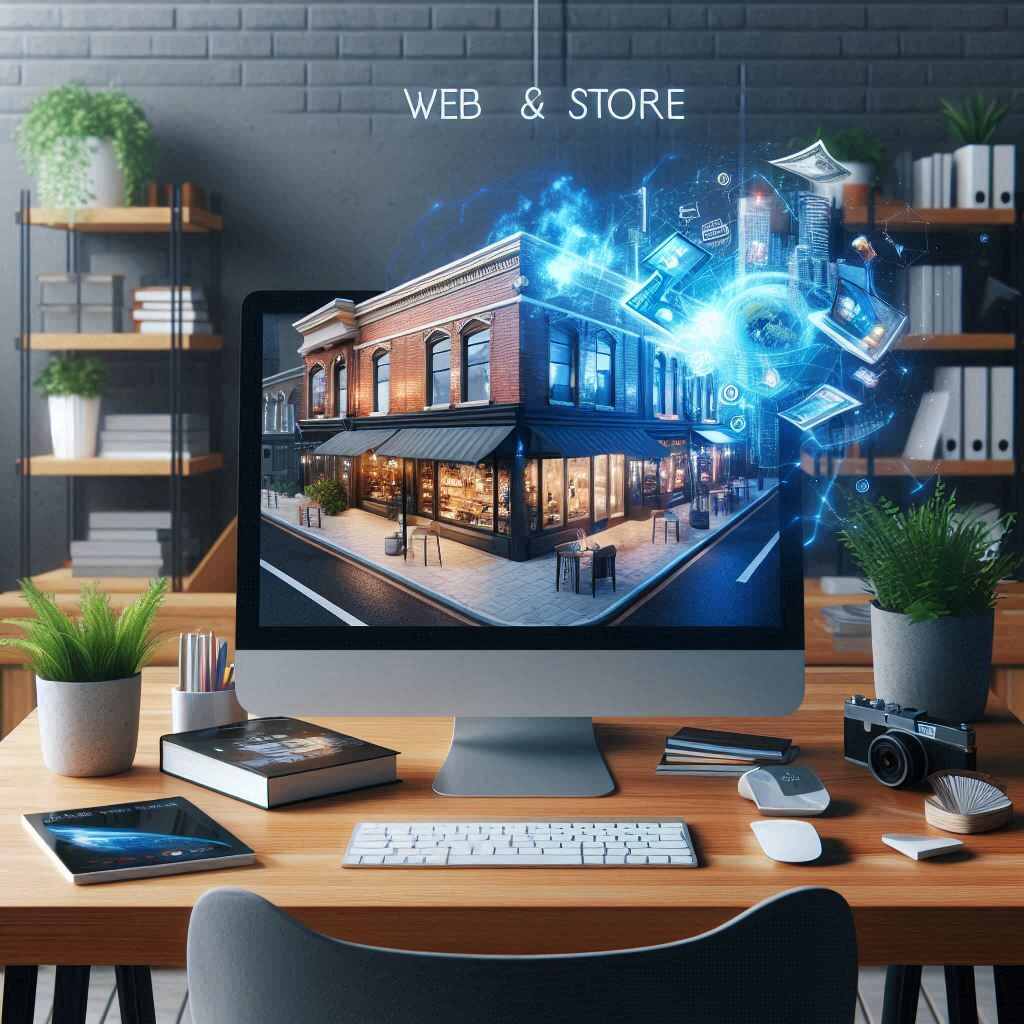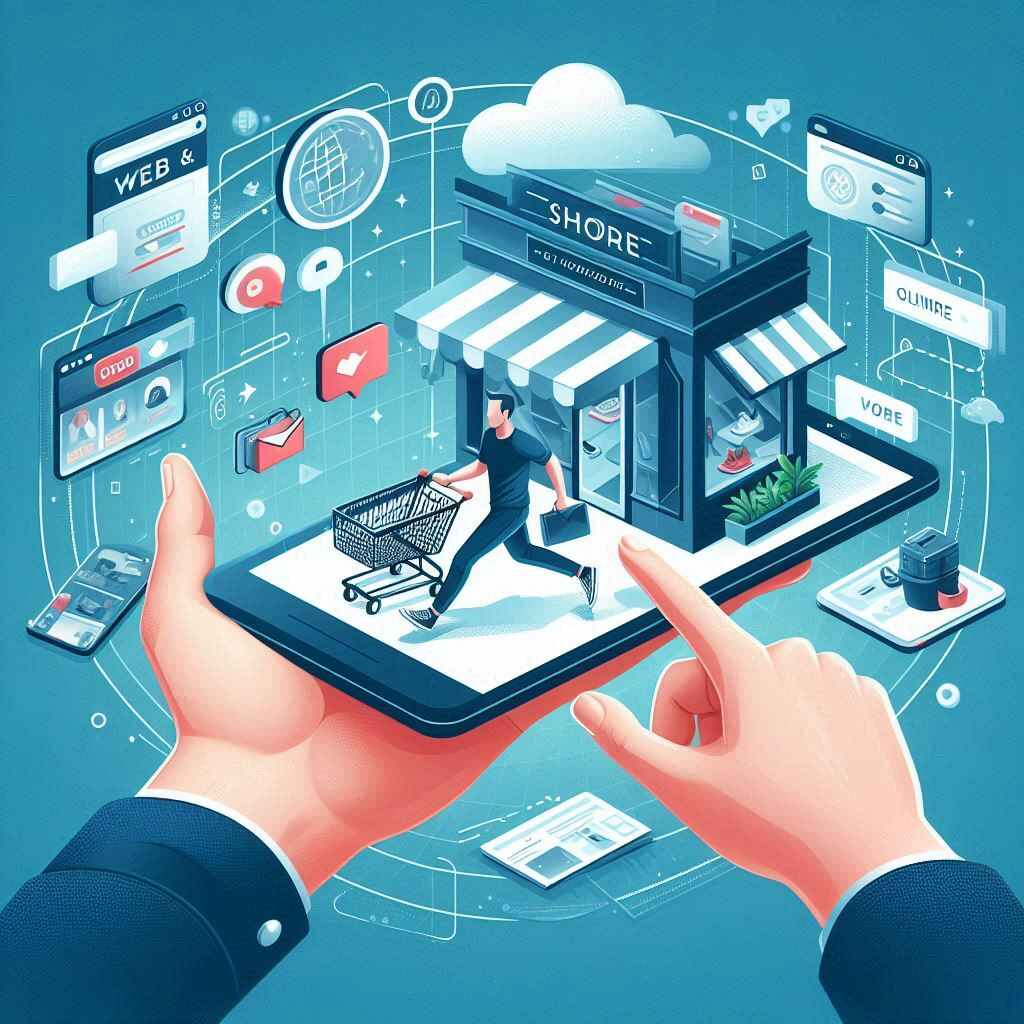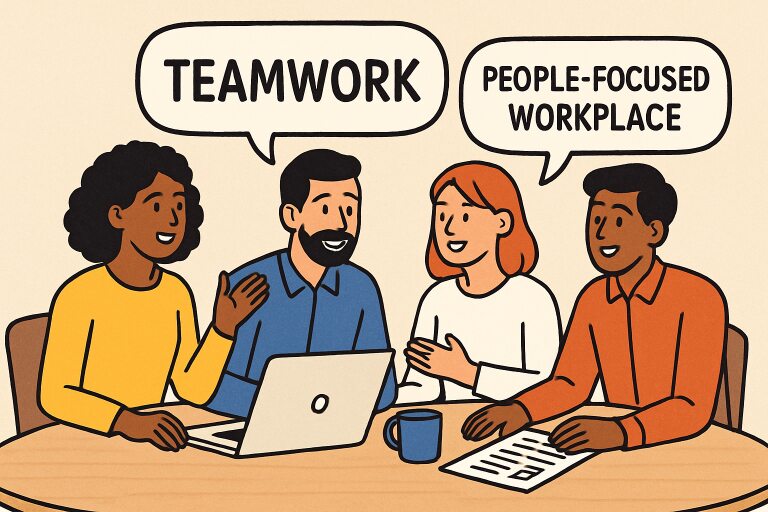Web & Store
In today’s fast-moving digital world, simply having a physical shop or just an online store isn’t enough anymore. If you want to thrive, you’ve got to be where your customers are—and guess what? They’re everywhere. That’s where the magic of “Web & Store” comes in. It’s the perfect combo of having a sleek website and a rock-solid e-commerce store, all wrapped into one seamless experience.

Let’s unpack this powerful duo, step by step.
| Category | Fact/Figure | Source/Notes |
|---|---|---|
| Global E-Commerce Sales | $6.3 trillion in 2024 (projected to hit $7.5 trillion by 2026) | Statista, 2024 |
| Mobile Shopping Share | 72.9% of all e-commerce sales come from mobile devices | Insider Intelligence |
| Online Buyers Worldwide | Over 2.64 billion people shop online | Statista, 2024 |
| Website Load Time | 53% of mobile users leave a site if it takes more than 3 seconds to load | Google PageSpeed Insights |
| Conversion Rate (Average) | 2.35% for e-commerce websites | WordStream, 2024 |
| Top Platforms Market Share | Shopify: 28%, WooCommerce: 23%, Magento: 4% | BuiltWith, 2024 |
| Impact of Reviews | 93% of customers read online reviews before purchasing | Podium 2023 Report |
| Social Media Influence | 54% of consumers use social media to research products | GlobalWebIndex |
| Abandoned Cart Rate | 69.99% average cart abandonment across all industries | Baymard Institute |
| Voice Shopping Forecast | $40+ billion in sales from voice shopping by 2025 | OC&C Strategy Consultants |
| Search Engine Traffic | 68% of online experiences begin with a search engine | BrightEdge |
| Return Rate in E-Commerce | 20-30% of products purchased online are returned | Invesp |
| Website Design Impact | 94% of first impressions are design-related | Stanford Web Credibility Research |
| SSL Certificate Importance | 85% of shoppers avoid unsecured websites | GlobalSign |
| Speed and Conversion | A 1-second delay in load time can reduce conversions by 7% | Akamai |
What is a Web & Store Concept?
The Fusion of Digital and Physical Commerce
Think of “Web & Store” as the superhero of modern retail. It blends a beautifully crafted website (the “Web” part) with a fully functional online shop (the “Store” part). Together, they allow businesses to show off their brand, tell their story, and—most importantly—sell stuff.
Whether you’re running a boutique clothing store or a tech gadget warehouse, having a platform that does both branding and selling is like having your cake and eating it too.

Why This Trend is Booming Now
Let’s be real: post-pandemic shopping habits have changed forever. People want to browse online, compare prices, and read reviews—all before walking into a store or clicking “Buy Now.” Businesses that can meet customers both online and offline are winning.
History and Evolution of Online Stores
From Brick-and-Mortar to Click-and-Order
Remember when shopping meant hopping into your car and hitting the mall? Yeah, that feels ancient now. The first wave of e-commerce began in the ‘90s with giants like Amazon and eBay. Since then, we’ve come a long way—from clunky static websites to fast, mobile-optimized stores.
Key Milestones in E-Commerce Evolution
1994: First online transaction (a CD)
2004: Shopify launches
2010s: Mobile shopping explodes
2020s: Hybrid models and Web & Store become essential
Building Your Web & Store Presence
Choosing the Right Domain and Hosting
Why Your Domain Name Matters
Your domain is your digital address. It needs to be catchy, relevant, and easy to remember. Imagine if Amazon was called “bestonlinestoreever.com”—not quite the same, right?
Reliable Hosting Options for E-Commerce
Speed matters. No one likes a slow site. Hosting providers like SiteGround, Bluehost, and Cloudways offer reliable solutions that can handle your online store traffic without hiccups.

Designing an Engaging Website
UX/UI Principles that Convert Visitors
Good design isn’t just about looking pretty—it’s about guiding users. Use clear navigation, eye-catching product images, and easy CTAs (calls-to-action) to lead your visitors toward making a purchase.
Mobile Optimization – A Must in 2025
Over 70% of e-commerce happens on mobile devices. If your site isn’t mobile-friendly, you’re losing out. Make sure your store loads fast, scrolls smooth, and looks amazing on a smartphone.
Integrating a Store into Your Website
Platforms for Web & Store Integration
Shopify, WooCommerce, Magento – Which One’s for You?
Shopify: Perfect for beginners, all-in-one solution
WooCommerce: Great for WordPress users
Magento: Ideal for large-scale operations
Each has its pros and cons. Choose what fits your skill level, budget, and growth plans.
Custom vs Template Designs
Templates are quick and easy, but if you want to stand out, consider custom development. A unique design tells your brand’s story and keeps users coming back.
Payment Gateways and Security
Secure Payments Build Trust
Offer multiple payment options: credit cards, PayPal, Stripe, Apple Pay—you name it. More choices = more convenience.
SSL, PCI Compliance, and Data Protection
Customers want to feel safe. An SSL certificate is non-negotiable. Being PCI compliant also keeps your store up to industry standards and protects user data.
Marketing Your Web & Store
SEO Strategies for Online Stores
Keywords, Meta Descriptions, and Alt Tags
Start with keyword research. Then sprinkle those keywords naturally across your titles, product descriptions, meta tags, and images.
Product Page Optimization Tips
Use unique descriptions (no copy-paste from suppliers)
Add high-quality images
Include reviews and FAQs
Keep it simple and clear
Social Media & Influencer Marketing
Engaging Your Audience Where They Are
Be active on platforms like Instagram, Facebook, TikTok, and Pinterest. Post behind-the-scenes content, sales, and customer testimonials.
Working with Micro-Influencers
You don’t need a Kardashian to promote your product. Micro-influencers have niche, loyal audiences and often deliver better engagement.
Managing Inventory and Orders Online
Inventory Management Tools
Tools like Zoho Inventory, QuickBooks Commerce, and Skubana help you keep track of stock in real-time.
Syncing Stock in Real-Time
Avoid the dreaded “Out of Stock” label. Real-time syncing ensures you’re always selling what you actually have.
Handling Returns and Customer Complaints
Be clear about your return policy. Handle issues politely and quickly—it builds loyalty faster than a coupon code.
Analytics and Growth
Tracking Performance Metrics
Google Analytics, Heatmaps, and Customer Journey Mapping
Data is your best friend. Understand what’s working, what’s not, and where people are dropping off.
Conversion Rate Optimization
Small tweaks—like a different CTA button or shorter checkout process—can lead to big wins.
Future of Web & Store
Trends to Watch in E-Commerce
AI, AR, and Personalization
Chatbots, virtual fitting rooms, and personalized product recommendations are making shopping feel futuristic.
Voice Search and Conversational Shopping
“Alexa, buy more coffee.” Voice is changing how we shop. Make sure your site is optimized for voice search.
Conclusion
The “Web & Store” model isn’t just a trend—it’s the new standard. By blending a strong digital presence with powerful e-commerce features, you’re setting your business up for long-term success.
The key? Keep evolving. Listen to your customers. And stay ahead of the tech curve.
Now’s the time to build a Web & Store combo that doesn’t just exist—but thrives.
FAQs
1. What’s the difference between a website and an online store?
A website showcases your brand; an online store lets customers buy products. Web & Store combines both.
2. Do I need coding skills to build a Web & Store?
Not necessarily. Platforms like Shopify or Wix make it easy for beginners to set up without coding.
3. What’s the best platform for small businesses?
Shopify and WooCommerce are both excellent for small businesses.
4. How much does it cost to run a Web & Store?
It depends on the platform, hosting, plugins, and marketing. Basic setups can start at $29/month.
5. How do I drive traffic to my Web & Store?
Use SEO, social media, influencer partnerships, and email marketing.
6. Can I connect my physical store with my online store?
Yes! POS systems like Square or Shopify POS sync your online and offline inventory.
7. How do I accept international payments?
Enable global payment gateways like PayPal, Stripe, or Wise for multi-currency options.
8. Is mobile optimization really that important?
Absolutely. Most shoppers are on their phones. A poor mobile experience = lost sales.
9. How do I know if my Web & Store is successful?
Track metrics like conversion rate, bounce rate, and average order value using tools like Google Analytics.
10. What are the top 3 must-haves for a Web & Store?
Mobile-friendly design, secure payment processing, and fast load speed.







